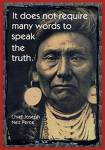Yan Lianke's harrowing, often macabre novel, based on a true incident, is a searing indictment of personal and governmental corruption and materialism. Attempting to alleviate poverty, the villagers of Ding Village, in rural Henan Province, China, begin selling their blood plasma, creating a rampant HIV epidemic. A tragic chain of events ensues, dissolving the bonds of family and community life.
For those interested in finding out more about the events that inspired Dream of Ding Village, Caijing Magazine provides a synopsis of the Chinese plasmapheresis industry.
Wednesday, July 20, 2011
Wednesday, January 5, 2011
Ekphractic Visual Response Poem
My colleague Joe seeded the idea for this ekphractic poem assignment, which I modified for my freshman classes.
Tried out the assignment myself. Here's my experimental poem:
ek·phra·sis
noun \ˈek-frə-səs\
plural ek·phra·ses also ec·phra·ses \-ˌsēz\
Origin of EKPHRASIS
Greek ekphrasis, literally, description, from ekphrazein to recount, describe, from ex- out + phrazein to point out, explain
First Known Use: 1715
Definition of EKPHRASIS
Definition courtesy of http://www.merriam-webster.com/browse/dictionary/ekphrasis
EKPHRACTIC POETRY ASSIGNMENT: Visual Response Poem.
· Include a copy of your image, the title and artist if known, along w/ your poem itself.
- Write about the scene depicted in the artwork (5Ws).
- Relate the artwork to something else it reminds you of (similes, metaphors, memories, history, other works of art).
- Write about the experience of looking at the artwork (physical, emotional, psychological, etc).
- Describe how the things in the artwork are organized or presented: its colors, textures, lines, perspective, angle, dimension, etc.
- Speculate about why the artist created this work (occasion, inspiration).
- Imagine a story behind what you see presented in the work of art.
- What happened just before? What will happen?
- Speak to the artist or the subject(s) of the painting.
- Write in the voice of the artist.
- Write in the voice of a person or object depicted in the artwork.
- What is happening in the wider world beyond the frame?
- What more can you "see"?
- What music can you "hear"?
Subscribe to:
Posts (Atom)



